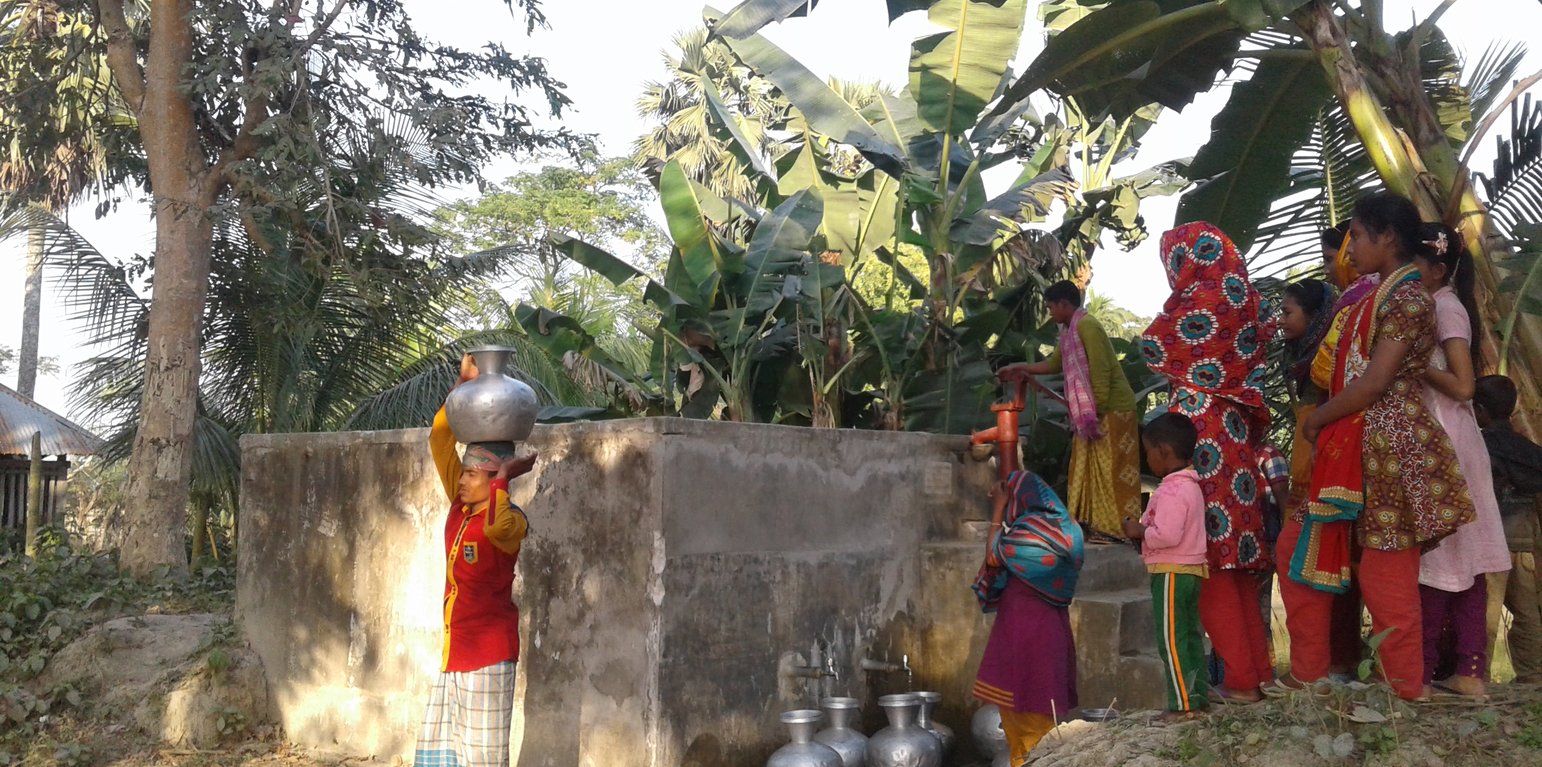



Coastal areas along the Bay of Bengal experience extreme seasonal variance in the presence of surface water including flooding, tidal surge, and drought. Many families living in these rural communities construct small ponds to ensure water availability for a variety of uses, such as washing, bathing, fish farming and animal watering as well as domestic use. Some families build larger ponds that are open to the use of all community members; whereby water is carried by women and children to households. Use of pond surface water may last up to several months during the year depending on the location, seasonal weather patterns, geologic conditions, capacity of the pond and user habits. Residents rely on ponds as a source of drinking water during the dry season when household rainwater harvesting techniques are no longer viable, making treatment essential.
Pond sand filters (PSF) is acentralised or semi-centralised water treatment technology often employed in many coastal areas where surface water is the only option due to saline aquifers and lack of resources for more robust, safely managed community water supply systems. The technology uses slow-sand filtration to remove turbidity (sediments) and pathogenic organisms whereby freshwater flows through layers of sand and gravel populated by a thin layer of microorganisms and treatment happens through physical and biological processes. Due to resource constraints, the number of PSF serving as water sources is usually limited. The technology considerably reduces the risk of infection with enteric pathogens. In conjunction with PSF, safe water transport (covered and cleaned containers) and household water treatment systems (chemical or additional filtration devices) are essential.
As stated in the Sustainable Sanitation and Water Management Toolbox (SSWM) slow sand filtration systems are characterised by a high reliability and rather low lifecycle costs. Moreover, neither construction nor operation and maintenance require more than basic skills. Hence, slow sand filtration is a promising filtration method for small to medium-sized, rural communities with a fairly good quality of the initial surface water source. As stated by the the World Health Organisation, slow sand filtration provides a simple but highly effective and considerably cheap tool that can contribute to a sustainable water management system.
Once a SSF facility is built, only clean sand is required for occasional replacement. The sand layers are put in gradually according to their grain sizes: rather coarse grains at the bottom and fine grains at the top. The sand-bed is usually covered with one meter of supernatant water (LOGSDON 2003). As the process of biological filtration requires a fair amount of time in order to improve effectiveness of water treatment, SSFs usually operate at slow flow rates between 0.1 – 0.3 m3/h per square metre of surface (WHO n.y.). The water thus remains in the space above the medium for several hours and larger particles are allowed to separate and settle. It then passes through the sand-bed where it goes through a number of purification processes (HUISMAN 1974).
Due to the risk of inland flooding and (seawater) tidal surges from offshore storms, communities build earthen embankments around the ponds to prevent contamination. Local authorities and community members must be involved in the design height of the embankment—which should be equivalent to the highest pre-recorded flood level. In the geo-referenced area (Patharghata) this is equivalent to the tidal surge of Cyclone Sidr (2007). Constructed roadways are often a good reference point. In southern Bangladesh , rural roadways are built to at a ten-year flood return period, so exceeding this height according to the means of the community and/or project is recommended.
Pond embankments are best raised with soil preferably of a clayey nature. The final covering layer must be rich in clay. Embankments should be planted with native grasses and flora that have strong root systems to stabilize slopes and prevent erosion during the rainy season and in cases of tidal surge due to storms. In Bangladesh, the native kolmi (Ipomoea) has proven effective. Community members have also planted crops on the embankments, such as banana trees, medicinal plants and even small garden trenches in the middle of the slope. Beyond structural support, the horticulture helps diversify nutrition and can provide a source of income for maintaining the pond sand filter.
Fences should be installed to prevent animals from entering ponds reserved for drinking water. Community members must guarantee that the ponds selected for PSF construction shall not be used for purposes such as: washing, bathing, fish farming (natural fish however can be allowed), direct cattle access washing and watering. Furthermore:
•Fertilizers and other chemicals shall never be allowed to go into the pond.
•The flow of any polluting materials in the vicinity of the pond shall always be directed away from the pond.
•Latrines, cowsheds, garbage dumps, graveyards, fuel outlets and similar polluting structures shall not be constructed within a distance of 30 meters from the pond.
•Duck or poultry rearing hanging sheds shall never be constructed over the pond.
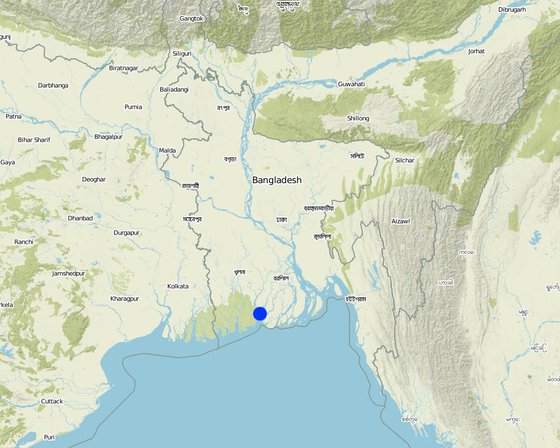
ទីតាំង: Baratangra, Ward:4, Union: Patharghata Union Parishad, Patharghata, Barguna district in coastal region, ប្រទេសបង់ក្លាដែស
ចំនួនទីកន្លែងបច្ចេកទេស ដែលវិភាគ: 10-100 កន្លែង
ការសាយភាយនៃបច្ចេកទេស: អនុវត្តនៅកន្លែងជាក់លាក់មួយ/ ប្រមូលផ្តុំនៅតំបន់តូចៗ
តើស្ថិតក្នុងតំបន់ការពារអចិន្ត្រៃយ៍?:
កាលបរិច្ឆេទនៃការអនុវត្ត: តិចជាង 10ឆ្នាំមុន (ថ្មី)
ប្រភេទនៃការណែនាំឱ្យអនុវត្តន៍៖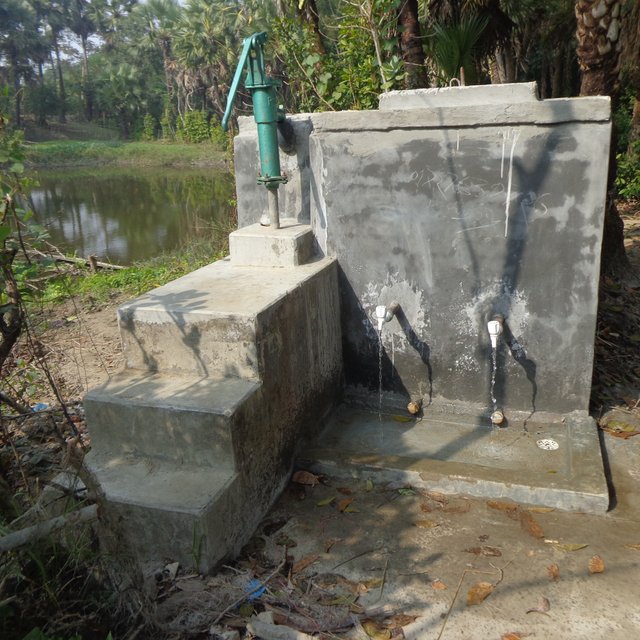
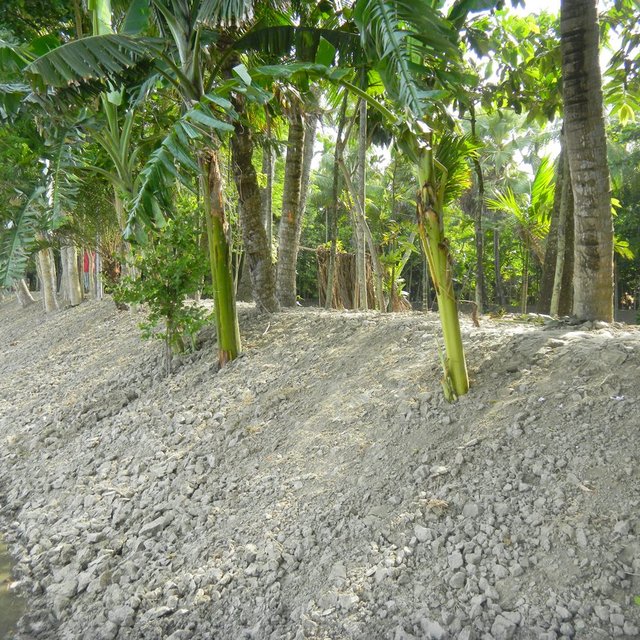





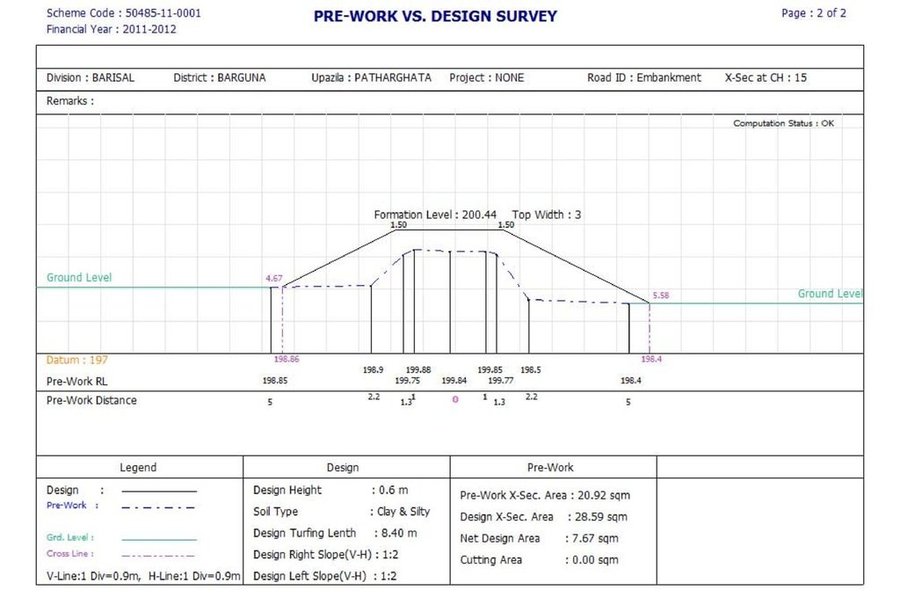
| បញ្ជាក់ពីធាតុចូល | ឯកតា | បរិមាណ | ថ្លៃដើមក្នុងមួយឯកតា (ដុល្លារ) | ថ្លៃធាតុចូលសរុប (ដុល្លារ) | % នៃថ្លៃដើមដែលចំណាយដោយអ្នកប្រើប្រាស់ដី |
| កម្លាំងពលកម្ម | |||||
| Pond Excavation and Embankment Raising | Person-days | 180,0 | 5,0 | 900,0 | 10,0 |
| Pond Fencing Works | Person-days | 20,0 | 5,0 | 100,0 | |
| Masonry | Person-days | 36,0 | 6,25 | 225,0 | |
| សម្ភារៈ | |||||
| Repairing tools | Set | 1,0 | 15,0 | 15,0 | |
| Tubewell/handpump | Pieces | 1,0 | 35,0 | 35,0 | 10,0 |
| Sanitary Fittings | Set | 1,0 | 100,0 | 100,0 | |
| ជី និងសារធាតុពុល | |||||
| Bleaching powder for disinfection | kg | 2,0 | 1,0 | 2,0 | 10,0 |
| Lime for cleaning | kg | 50,0 | 0,5 | 25,0 | |
| សម្ភារៈសាងសង់ | |||||
| bricks | pieces | 6000,0 | 0,075 | 450,0 | 10,0 |
| cement | 50 Kilo Bags | 50,0 | 5,75 | 287,5 | 10,0 |
| sand | cubic feet | 52,0 | 0,375 | 19,5 | |
| mild steel round bar | kg | 210,0 | 0,75 | 157,5 | |
| ផ្សេងៗ | |||||
| Materials Transport Cost | Lump Sum | 1,0 | 185,0 | 185,0 | 10,0 |
| ថ្លៃដើមសរុបក្នុងការបង្កើតបច្ចេកទេស | 2'501.5 | ||||
| ថ្លៃដើមសរុបក្នុងការបង្កើតបច្ចេកទេសគិតជាដុល្លារ | 2'501.5 | ||||
| បញ្ជាក់ពីធាតុចូល | ឯកតា | បរិមាណ | ថ្លៃដើមក្នុងមួយឯកតា (ដុល្លារ) | ថ្លៃធាតុចូលសរុប (ដុល្លារ) | % នៃថ្លៃដើមដែលចំណាយដោយអ្នកប្រើប្រាស់ដី |
| កម្លាំងពលកម្ម | |||||
| two-monthly cleaning of filter materials | Person days | 12,0 | 5,0 | 60,0 | 100,0 |
| Seasonal erosion control | Person days | 12,0 | 5,0 | 60,0 | 100,0 |
| ជី និងសារធាតុពុល | |||||
| bleeching powder | bag | 5,0 | 2,0 | 10,0 | 100,0 |
| ថ្លៃដើមសរុបសម្រាប់ការថែទាំដំណាំតាមបច្ចេកទេស | 130.0 | ||||
| ថ្លៃដើមសរុបសម្រាប់ការថែទាំដំណាំតាមបច្ចេកទេសគិតជាដុល្លារ | 130.0 | ||||
Embankments provide a modest space for small scale gardening and fruit/medicinal tree cultivation. Such agriculture activities would be protected from tidal surge waters that destroy agriculture in low-lying areas.
Terre des hommes had raised embankments on ten community ponds prior to cyclone Mahasen (2013). Nine of the ten ponds embankments remained intact, preserving valuable fresh water from sea water contamination for drinking after treatment with PSF.
គុណភាពមុន SLM: >1000 fecal coliform units
គុណភាពក្រោយ SLM: <10 fecal coliform units
The PSF water source considerably reduces the risk of infection with enteric pathogens from the pond water. In Terre des hommes’ field experience, although a reduction in presence of fecal coliform (FC) by over 99% is possible, the PSF technology rarely eliminates all FC. A level of 1-10 fecal coliform units (FCU: colonies of E. coli per 100 mL of water) has been achieved, which is equivalent to an intermediate risk, or “probably safe” as defined by WHO. In conjunction with PSF, safe water transport (covered and cleaned containers) and household water treatment systems (chemical or additional filtration devices) are essential.
Users reported a decrease in water borne diseases through use of PSF water compared to surface water.
During disaster, the use of the PSF increased, with people walking from further distances to take water from the PSF to their homes.